Related Research Articles
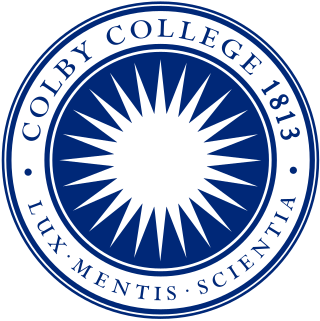
Colby College is a private liberal arts college in Waterville,Maine. Founded in 1813 as the Maine Literary and Theological Institution,it was renamed Waterville College in 1821. The donations of Christian philanthropist Gardner Colby saw the institution renamed again to Colby University before settling on its current title,reflecting its liberal arts college curriculum,in 1899. Approximately 2,000 students from more than 60 countries are enrolled annually. The college offers 54 major fields of study and 30 minors.

Bowdoin College is a private liberal arts college in Brunswick,Maine. When Bowdoin was chartered in 1794,Maine was still a part of the Commonwealth of Massachusetts. The college offers 35 majors and 40 minors,as well as several joint engineering programs with Columbia,Caltech,Dartmouth College,and the University of Maine.

Wesleyan University is a private liberal arts university in Middletown,Connecticut,United States. It was founded in 1831 as a men's college under the Methodist Episcopal Church and with the support of prominent residents of Middletown. It is currently a secular institution.
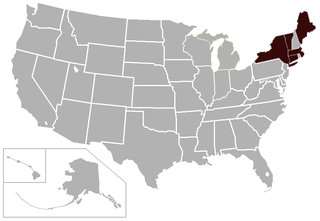
The New England Small College Athletic Conference (NESCAC) is an intercollegiate athletic conference that competes in the National Collegiate Athletic Association (NCAA) Division III comprising sports teams from eleven highly selective liberal arts institutions of higher education in the Northeastern United States. The eleven institutions are Amherst College,Bates College,Bowdoin College,Colby College,Connecticut College,Hamilton College,Middlebury College,Tufts University,Trinity College,Wesleyan University,and Williams College.

Bates College is a private liberal arts college in Lewiston,Maine,United States. Anchored by the Historic Quad,the campus of Bates totals 813 acres (329 ha). It maintains 600 acres (240 ha) of nature preserve known as the "Bates-Morse Mountain" near Campbell Island and a coastal center on Atkins Bay.

Kentucky Wesleyan College (KWC) is a private Methodist college in Owensboro,Kentucky. Fall 2018 enrollment was 830 students.

Southwestern University is a private liberal arts college in Georgetown,Texas. Formed in 1873 from a revival of collegiate charters granted in 1840,Southwestern is the oldest college or university in Texas. Southwestern offers 40 bachelor's degrees in the arts,sciences,fine arts,and music as well as interdisciplinary and pre-professional programs. It is accredited by the Southern Association of Colleges and Schools and the National Association of Schools of Music and historically affiliated with the United Methodist Church.

West Virginia Wesleyan College is a private college in Buckhannon,West Virginia. It has an enrollment of about 900 students from 35 U.S. states and 26 countries. The school was founded in 1890 by the West Virginia Conference of the Methodist Episcopal Church and is currently affiliated with the United Methodist Church. West Virginia Wesleyan College is accredited by the Higher Learning Commission.

Alpha Rho Upsilon was a fraternity at Bowdoin College in Brunswick,Maine,from 1946 until it was disbanded in 1990. Until then it occupied a late Victorian wood-frame house at 238 Maine Street.

Charles Wilbert "Bill" Snow was an American poet,educator and politician. He served as the 75th Governor of Connecticut. He generally went by the name Wilbert or Bill Snow,or formally as C. Wilbert Snow.
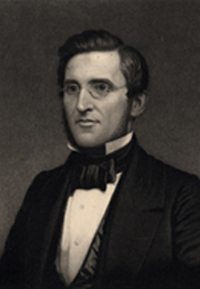
Joseph Cummings was an American academic who served as the 5th president of Wesleyan University from 1857 to 1875,the 5th president of Northwestern University from 1881 to 1890,and the president of Genesee College from 1854 to 1857.
Roger Howell Jr. was the tenth president of Bowdoin College in Brunswick,Maine,and the fourth to be an alumnus of the college.

James Stacy Coles was the ninth president of Bowdoin College.
Robert Hazard Edwards is an American educator who was the seventh president of Carleton College and the thirteenth president of Bowdoin College.

The Bowdoin Polar Bears are the intercollegiate athletic teams that represent Bowdoin College,located in Brunswick,Maine. The Polar Bears compete in the National Collegiate Athletic Association (NCAA) and New England Small College Athletic Conference (NESCAC). Bowdoin College currently fields teams in fourteen men's sports and sixteen women's sports. The polar bear team name was selected to honor Robert Peary of the class of 1877 who lead the first expedition that reached the North Pole.
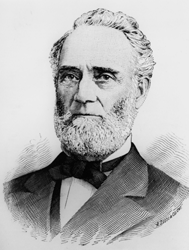
Charles Rhodes Pomeroy was an American educator most notable for serving as the Kansas State Normal School's (KSN) third president in Emporia,Kansas.

The history of Bates College began shortly before Bates College's founding on March 16,1855,in Lewiston,Maine. The college was founded by Oren Burbank Cheney and Benjamin Bates. Originating as a Free Will Baptist institution,it has since secularized and established a liberal arts curriculum. After the mysterious 1853 burning of Parsonsfield Seminary,Cheney wanted to create another seminary in a more central part of Maine:Lewiston,a then-booming industrial economy. He met with religious and political leaders in Topsham,to discuss the formation of such a school,recruiting much of the college's first trustees,most notably Ebenezer Knowlton. After a well-received speech by Cheney,the group successfully petitioned the Maine State Legislature to establish the Maine State Seminary. At its founding it was the first coeducational college in New England. Soon after it was established,donors stepped forward to finance the seminary,developing the school in an affluent residential district of Lewiston. The college struggled to finance its operations after the financial crisis of 1857,requiring extra capital to remain afloat. Cheney's political activities attracted Benjamin Bates,who was interested in fostering his business interests in Maine. Bates donated installments of tens of thousands of dollars to the college to bring it out of the crisis.
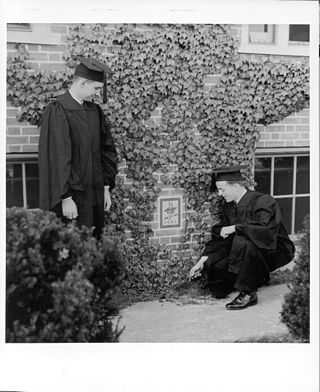
The traditions of Bates College include the activities,songs,and academic regalia of Bates College,a private liberal arts college in Lewiston,Maine. They are well known on campus and nationally as an embedded component of the student life at the college and its history.

Alpha Delta Phi Society, also known as The Society or Adelphi Society, is a United States Greek-letter literary and social society that is gender-inclusive. The society formed in 1992 when four chapters withdrew from the all-male Alpha Delta Phi fraternity. Legally,the two groups are separate entities with different ideologies but continue to share traditions.
References
- ↑ Presidents and Deans of American Colleges and Universities. Who's who in American education. 1966. Retrieved 2015-04-04.
- ↑ "Remembering A. Leroy Greason, former president of the College - The Bowdoin Orient". Archived from the original on 2012-03-24. Retrieved 2015-04-04.
- ↑ "Letter from President Mills: Remembering A. LeRoy Greason Jr., Campus News (Bowdoin)". bowdoin.edu. Retrieved 2015-04-04.
- ↑ Anderson, Patricia McGraw, "The Back Campus and Mall," in The Architecture of Bowdoin College (Brunswick, Maine: Bowdoin College Museum of Art, 1988), p. 83.
- ↑ http://www.timesrecord.com/articles/2011/08/30/news/doc4e5baba7bc953768488951.txt%5B%5D
- ↑ Creamer, Melanie, "Feature Obituary: A. LeRoy Greason Jr., 88, Bowdoin College professor, leader," Portland Press Herald, August 30, 2011, pressherald.com
- ↑ "LeRoy Greason Pool," Bowdoin Polar Bears, athletics.bowdoin.edu